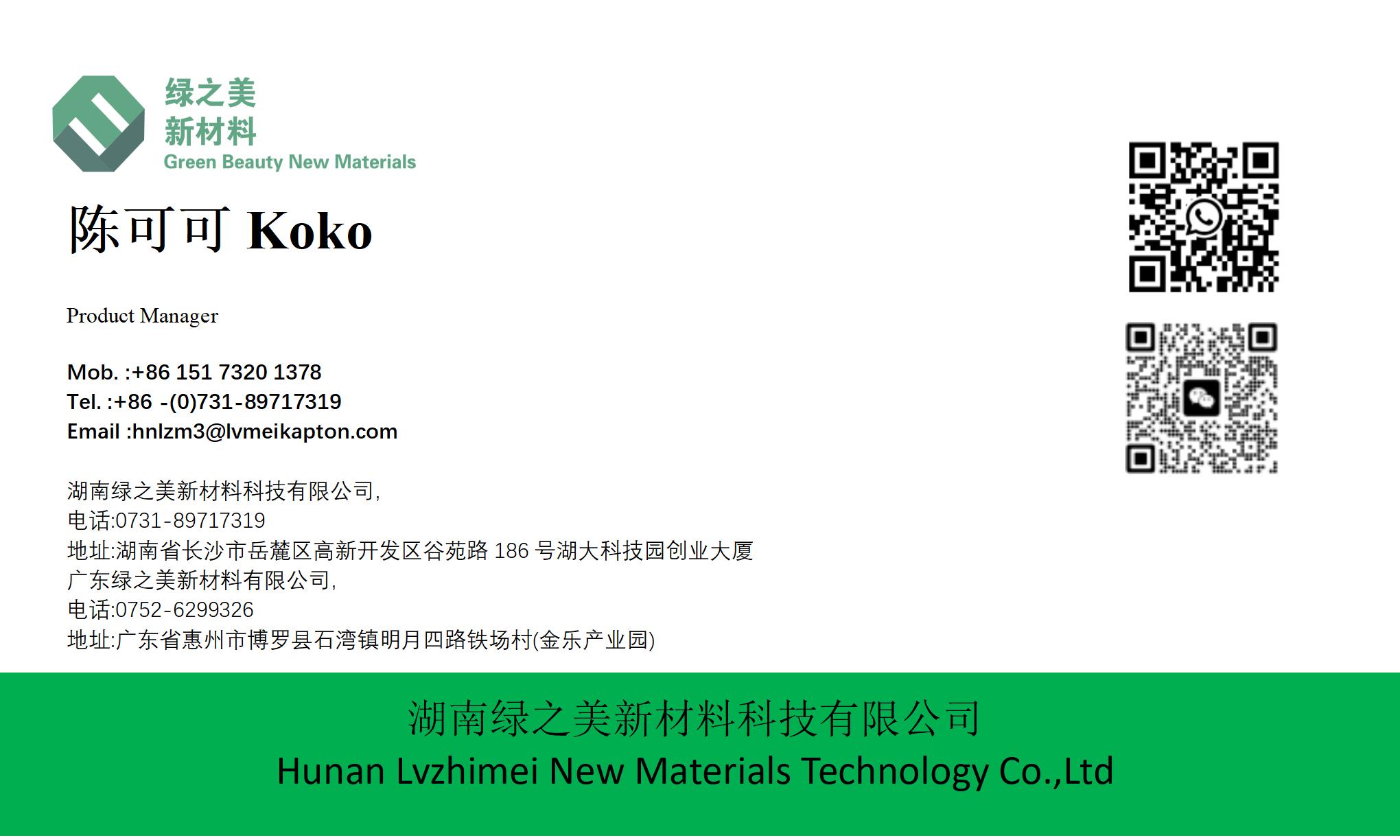hnlzm@lvmeikapton.com
+86 13787123465


Hunan Lvzhimei New Material Technology Co., Ltd.


NameDescriptionContent
Why Brown Circuit Board High-Temperature Tape is Preferred |https://www.lvmeikapton.com/
Source:
|
Author:Koko Chan
|
Published time: 2025-05-23
|
2 Views
|
Share:
In the intricate world of circuit board manufacturing and maintenance, selecting the right materials is crucial for ensuring reliability and efficiency. Among the various types of high-temperature tapes available, brown circuit board tape has emerged as a preferred choice for engineers and technicians. This article delves into the unique advantages of brown high-temperature tape, exploring its insulation properties, thermal resistance, trace visibility, and practical applications that make it a go-to solution for circuit board-related tasks.
Why Brown Circuit Board High-Temperature Tape is PreferredBy [Your Name]
IntroductionIn the intricate world of circuit board manufacturing and maintenance, selecting the right materials is crucial for ensuring reliability and efficiency. Among the various types of high-temperature tapes available, brown circuit board tape has emerged as a preferred choice for engineers and technicians. This article delves into the unique advantages of brown high-temperature tape, exploring its insulation properties, thermal resistance, trace visibility, and practical applications that make it a go-to solution for circuit board-related tasks.
1. High-Temperature Resistance: The Core AdvantageOne of the primary reasons brown circuit board tape is favored is its exceptional high-temperature resistance. Typically made from polyimide (PI) material, these tapes can withstand temperatures up to 300°C (572°F) or even higher, depending on the specific formulation. This thermal resilience is critical during processes like soldering, reflow, and wave soldering, where circuit boards are exposed to intense heat. Brown tapes maintain their structural integrity, preventing melting, shrinking, or degradation that could compromise board functionality.
Table 1: Temperature Performance Comparison
Material | Max Temperature | Thermal Stability |
Brown PI Tape | 300°C+ | Excellent |
Standard PET Tape | 150°C | Moderate |
Silicone Tape | 250°C | Good |
As evident from Table 1, brown PI tape outperforms alternatives like PET and silicone tapes, ensuring longevity and stability in high-heat environments.
2. Enhanced Trace Visibility for Inspection and TroubleshootingThe brown color of these tapes plays a pivotal role in manual inspections and troubleshooting. Circuit boards often feature intricate patterns of traces, components, and solder joints, which can be visually challenging to discern, especially in densely populated layouts. Brown tape provides a contrasting background that highlights these elements, aiding technicians in identifying issues such as misplaced components, shorts, or trace defects.
Case Study: Assembly Line EfficiencyA semiconductor manufacturer reported a 25% reduction in visual inspection errors after switching to brown tape. The color contrast improved trace visibility, enabling operators to detect solder bridging and misaligned parts more efficiently.
3. Superior Electrical Insulation for Complex DesignsModern circuit boards increasingly adopt compact designs with closely spaced components and traces. This density raises the risk of electrical shorts, particularly in environments with voltage fluctuations. Brown high-temperature tapes offer robust dielectric strength, preventing current leakage and ensuring electrical isolation between conductive elements. Their resistance to arc tracking further enhances safety, meeting industry standards like UL 94 V-0 for flammability and IPC-FC-231 for electrical properties.
4. Adhesion Stability Through Thermal CyclesDuring a circuit board’s lifecycle, it may undergo repeated thermal cycling (heating and cooling) due to operational demands or environmental conditions. Brown tapes exhibit superior adhesive stability, maintaining firm bonding even after hundreds of thermal cycles. This durability prevents tape detachment, which could lead to insulation failure or component displacement.
Laboratory Test Results:
●
After 500 thermal cycles (25°C to 260°C), adhesion strength remained >10 N/25mm.
●
No delamination or adhesive residue left on board surfaces.
5. Versatility in Repair and PrototypingBeyond manufacturing, brown tape is invaluable for repair and prototyping tasks. When replacing faulty components or modifying board layouts, technicians can use the tape to temporarily insulate areas, protect sensitive regions, or mark traces for analysis. Its visibility streamlines troubleshooting by guiding attention to specific sections, saving time and reducing errors.
6. Cost-Effectiveness Without Compromising QualityWhile premium materials often come at higher costs, brown high-temperature tapes offer a balance of performance and affordability. Their durability reduces long-term replacement needs, and their ease of application saves labor costs during assembly. For small-scale prototyping or large-scale production, these tapes provide cost-effective insulation and protection without sacrificing critical functionalities.
7. Environmental ConsiderationsIn an era of growing sustainability demands, brown tapes align with eco-friendly practices. Many variants are lead-free and RoHS-compliant, minimizing environmental impact during production and disposal. Additionally, their resistance to chemicals (e.g., solvents used in cleaning processes) ensures compatibility with green manufacturing protocols.
8. Integration with Automation and Manual ProcessesWhether in automated assembly lines or manual workshops, brown tapes adapt seamlessly. Their consistent thickness and smooth surfaces prevent jams in pick-and-place machines, while their hand-tearable edges facilitate precise application without specialized tools. This flexibility makes them suitable for diverse production environments.
ConclusionBrown circuit board high-temperature tape’s combination of thermal resilience, trace visibility, insulation, and cost-effectiveness solidifies its status as a preferred choice in the electronics industry. From safeguarding complex designs to streamlining inspections and repairs, its advantages transcend mere convenience—they are essential for ensuring circuit board reliability, efficiency, and longevity. As technology continues to evolve, brown tape’s role in enabling advanced electronics will only grow more significant.



Hunan Lvzhimei New Material Technology Co., Ltd.
Quick Links
Product Categories
© 2024 Hunan Lvzhimei New Material Technology Co., Ltd.All Rights Reserved. Designed by Erge
0731 - 89717319
hnlzm@lvmeikapton.com
+86 13787123465
Room 502, Chuangye Building, No186, Guyuan Road, High-Tech District, Changsha, Hunan, China
CONTACT



